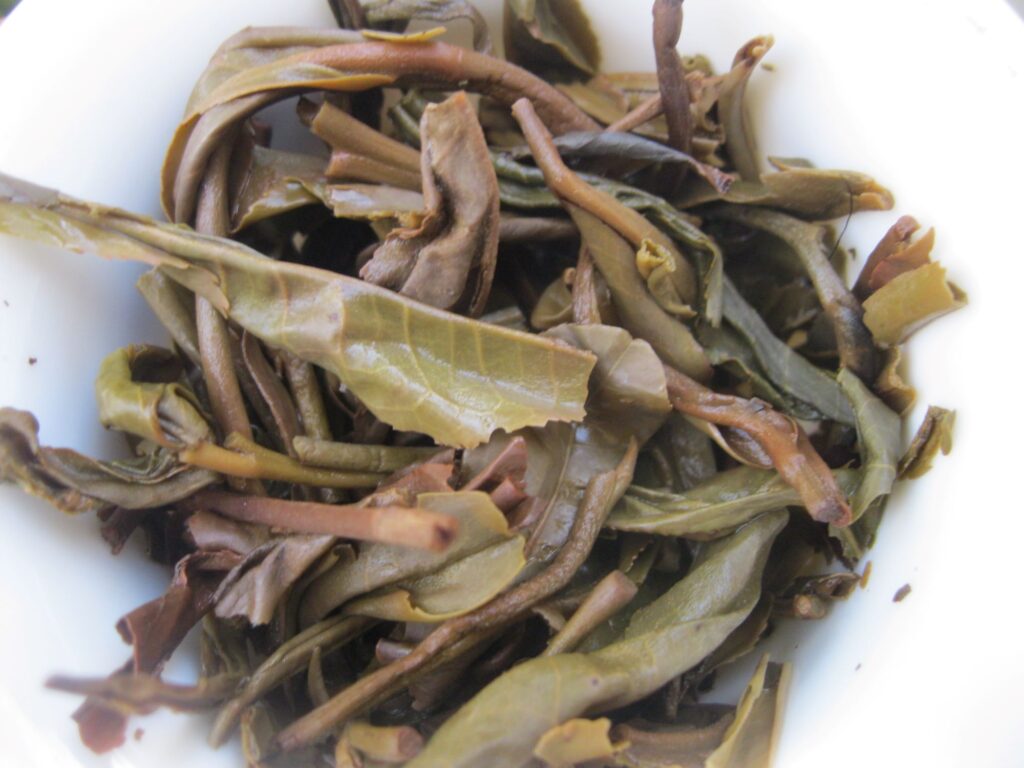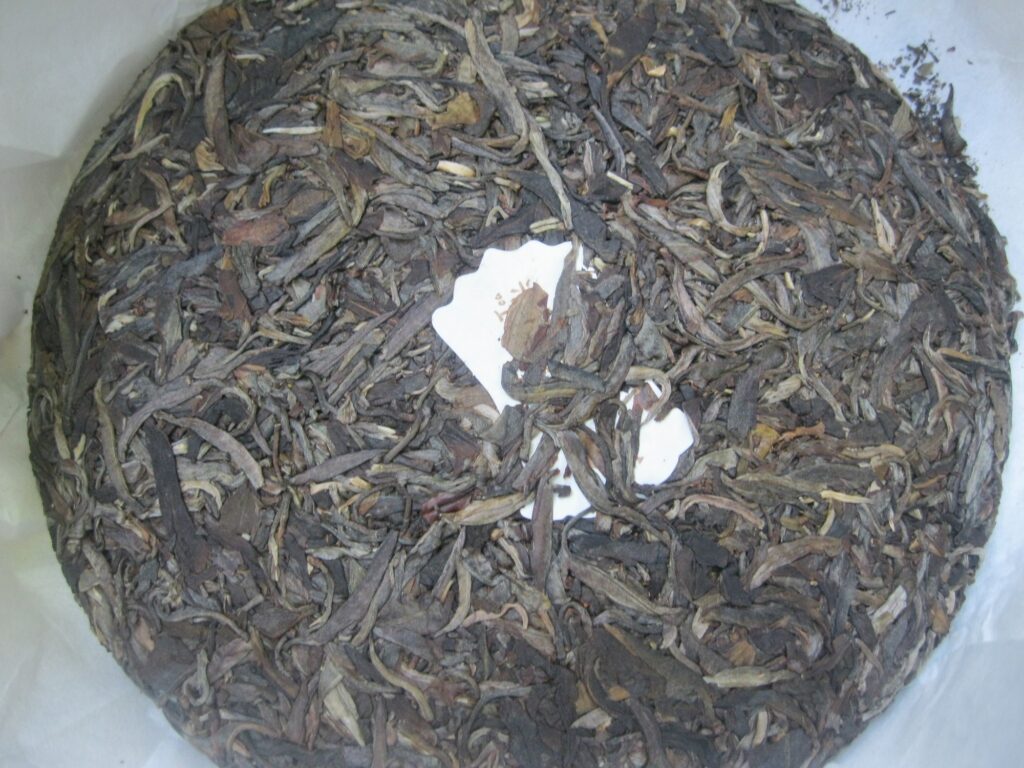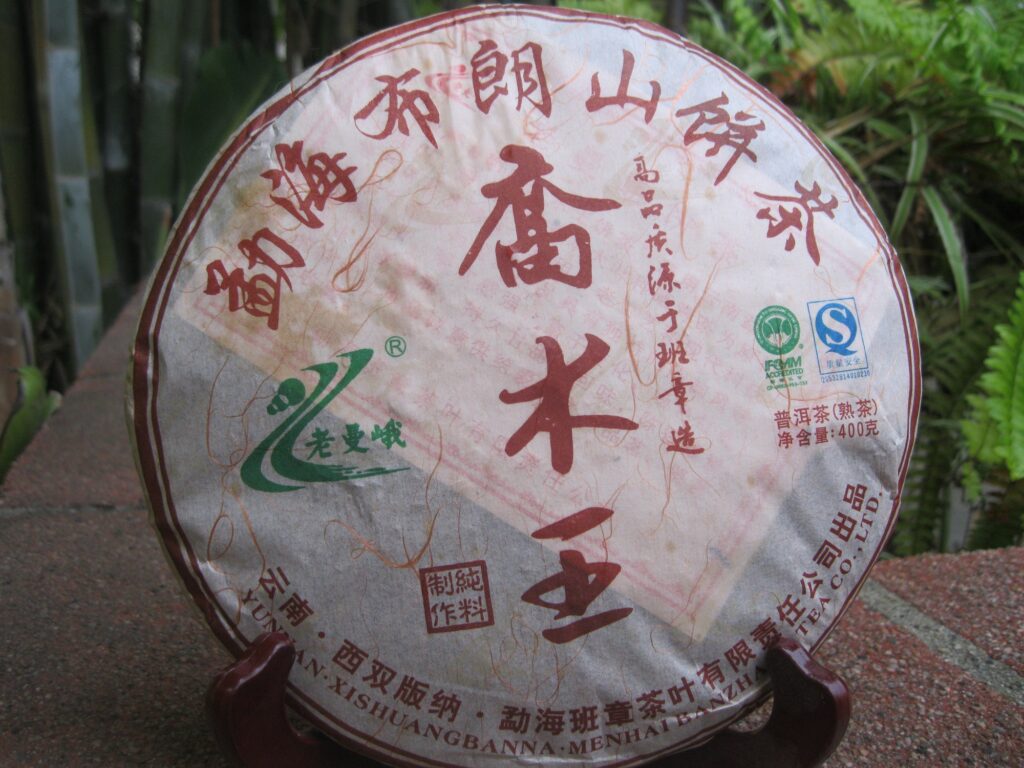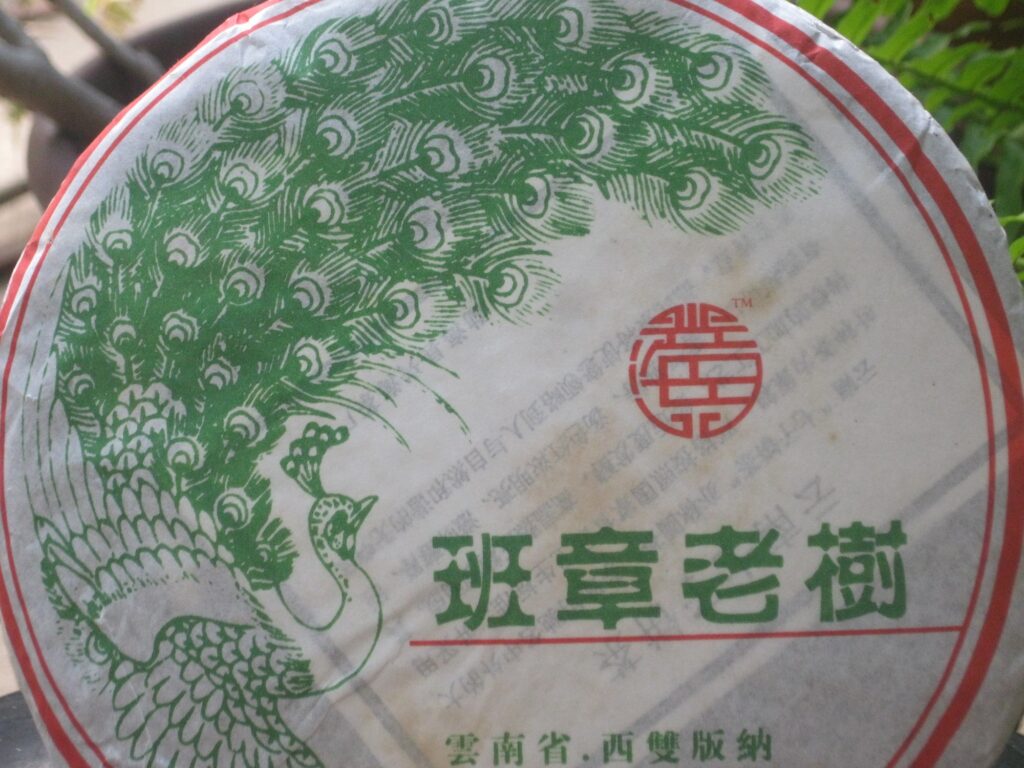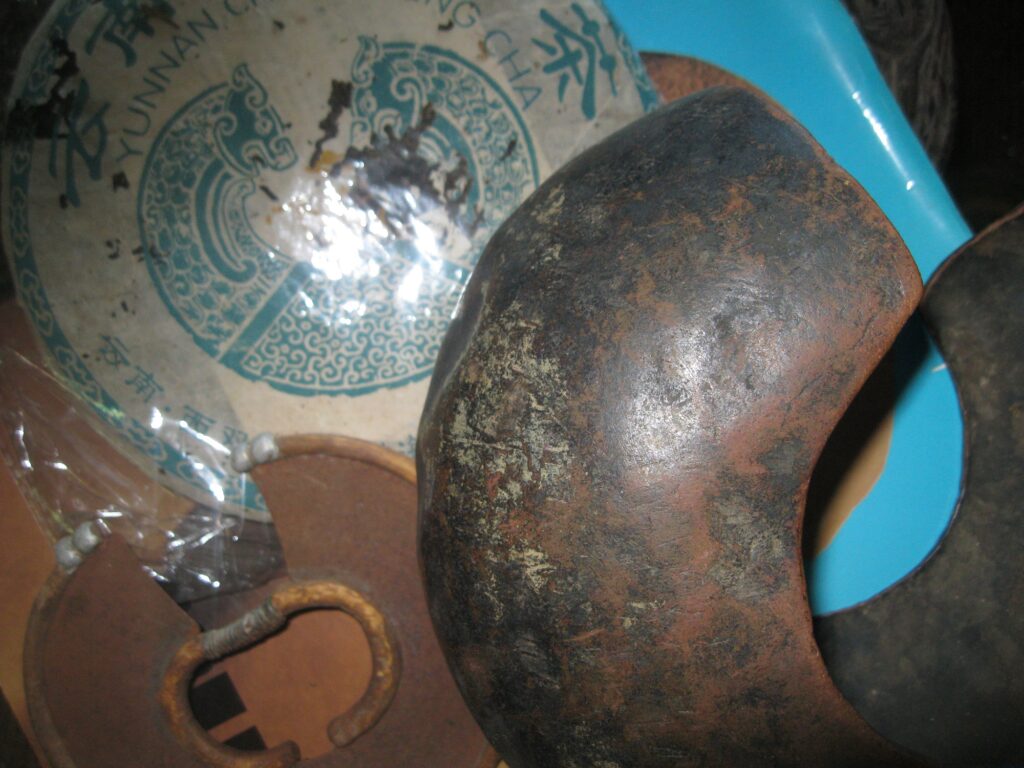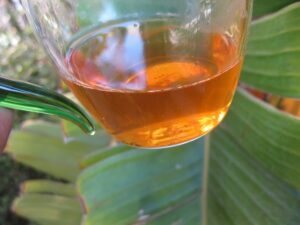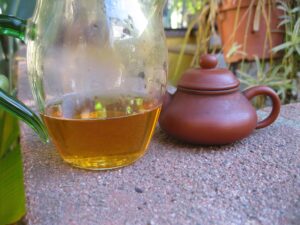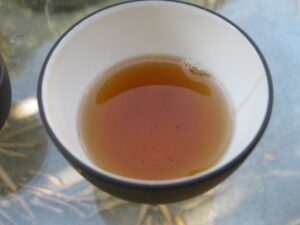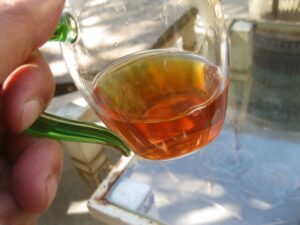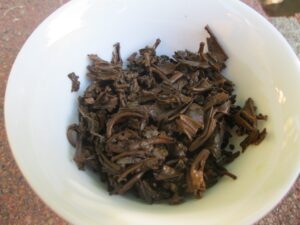Winter Tasting 2024
Winter Tasting 2024 finds “Peej”, as he’s known on the streets, back to the arduous task of sampling. His focus goes back to Xinghai factory, in the dispassionate manner of any hoarder. He recently acquired an edition of the ’06 Bulang GS without the “special” stamp. I guess this would make it the 3rd or late 2nd batch. It you drink it like most teas, it’s hideous; if drunk like cognac or ouzo, then at least you’re prepared.
Bulang Old Tree (no stamp)
There’s that hella fennel, star anise, bitter grasses, like golden rod. . . white oak. I’m using my slow pour floral zisha, 150ml at 6.7g, which I feel is far too much really, but I’m giving this intensity a go. It’s deathly astringent and drying, but less so in the throat. I think the easiest thing to call it would be black tea, dianhong, but this species of star anise is particular to Mt Bulang in Banzhang. It’s a recuring theme in many Xinghai productions and is evident in the LME Quincy, and the Tiger, CMS.
The Bulang Old Tree “Special” ostensibly is the second batch, as the neifei bears no timestamp. Presumably, there is a Bulang GS “Select”, identical but for the designating stamp on the wrapper as well as the date stamp on the neifei. The Special strikes me as having notes similar to the MKRS Daxueshan, a Lincang production. Such are the hazzards of getting too hung up on terroir. Daxueshan, nonetheless is on the “black tea” side of Lincang in contrast to Bingdao, which tends toward round and fruity, white grapey, pear. Daxueshan area has a taste like Fengqing, in Simao, home to the largest and most famous producer of dianhong in all Yunnan. There’s two cakes of this no-stamp version and price is quite modest, under $70usd.
Dianhong also goes by the name Yunnan Gold, or just black tea from Yunnan. Oxidized productions are a specialty in itself. The area of Fengqing is thought to be ideal for making black tea. The puerh from this area tastes the same, with a distinctive rose nose and taste. The 6FTM Lunar New Year Series possesses at least 30% Fengqing material.
BZ Wild King
The nose on the ’06 BZ Wild King evokes a sense of a spicy Smurfberry Crunch, lots of vanilla and blueberry, some nutmeg. It hearkens to an era in the 80s, when Post cereals still existed. While that opens up, should mention the run in I had with the ’07 Imperial Tuo, 250g raw. It may get posted soon for a short spell. It’s a very recent acquisition and has now entered a tasting rotation of sorts. It has a personality akin to the Tiger Tuo. A citrus pine vibe presents in the nose and liquor, some characteristic Xinghai apple and moderate sweetness with big astringency. Quite similar to the Green Peacock come to think of it. The Green Peacock is a dreadfully good buy, more oiling, and one of the most well-received of ’23.
Goodness! The ’07 BZ Wild King is nice in this ceramic shot glass. It was just as good in the porcelain cup. Smoke and wood, sweet then red-fleshed plum, super-intense Juicy Fruit factor on back end. As usual, possesses that bracing astringency characteristic of Xinghai factory particularly before ’07. There’s that distinctive medicinal note also found in the Bulang Old Tree. BZWK has a top end note of swiss chard with vanilla, but turning more fully vanilla with spices like ginger and clove. It’s on par with ’07 Mincemeat in terms of spiciness. The sweetness is greater than usual for XH, but that’s definitely balanced out by the bold astringency, which is instant and reaching into the throat. It may be testament to the “wild” in the title.
Stylin
The smoke evident in the first two infusions forms more of an accent than theme in the overall construction of the batch. Smoke is much more evident in Stylin, from the same year. Stylin’s leaves seem to be fairly small and expectations are that it will be intense. The 6.7g used in the second case of BZWK proved more appropriate than for the Bulang Old Tree (special). The nose is floral and fruity, sweet and the rinse is sudsy. A definite aroma of honeysuckle and backdrop of smoke in the pitcher. The smoke hits first followed by creamy and ferment-y butterscotch and then smoky, fruity, mineral-y. Very nice sweetness.
The brew is lightest and longest-stored of the three sampled. Intense smoked dryer sheet essence. Definitely more bitter than the BZWK. The incense/dryer sheet essence fades to Juicy Fruit. Stylin is first batch with a timestamp on the neifei. A florid aroma coats the pitcher, there’s that “pissiness” of certain flowers, like magnolias. The pissiness is disguised by the smoked wood in the broth. It may be a puerh, but it’s tequila-identified. Puerh Junky knows next to nothing about tequila, but there is one type that is sweet and palatable like amaretto. They call it “anejo.”
The third infusion appears slightly more coppery with some lasting suds befitting its dish-soap fragrance. The really perfume-y puerhs are disgusting. The flowers here are sultry and oppressive. It’s pure perfume and the smoke is fighting a losing battle. A bit of wintergreen and bitter grasses. Astringent. Cloying, like a woman seeking attention by wearing very loud perfume. Although the perfume is evident in the nose, the taste is of ginseng, unapologetically bitter, spinach minerals, and a bittersweetness of Sweet-n-Low. Feels now more like the cheap tequila that you’re just drinking for the hangover the next day. Feels like it’s at least five years off for the lightweight Junky.
I just made that five-years bit up to make myself sound like a knowledgeable soothsayer. Stylin‘, despite its cunning that sounds lower on the register, still possesses a rambunctiousness that belies youth. Right now, it’s quite dreadful. The smoke and perfume are hideous and punishing, then the bitterness. Experienced drinkers may enjoy this or prefer to sit this one out till it gets a few more years under its belt. It might end up being for the ages if you can store on your own for a couple years.
Instagram shots here.

